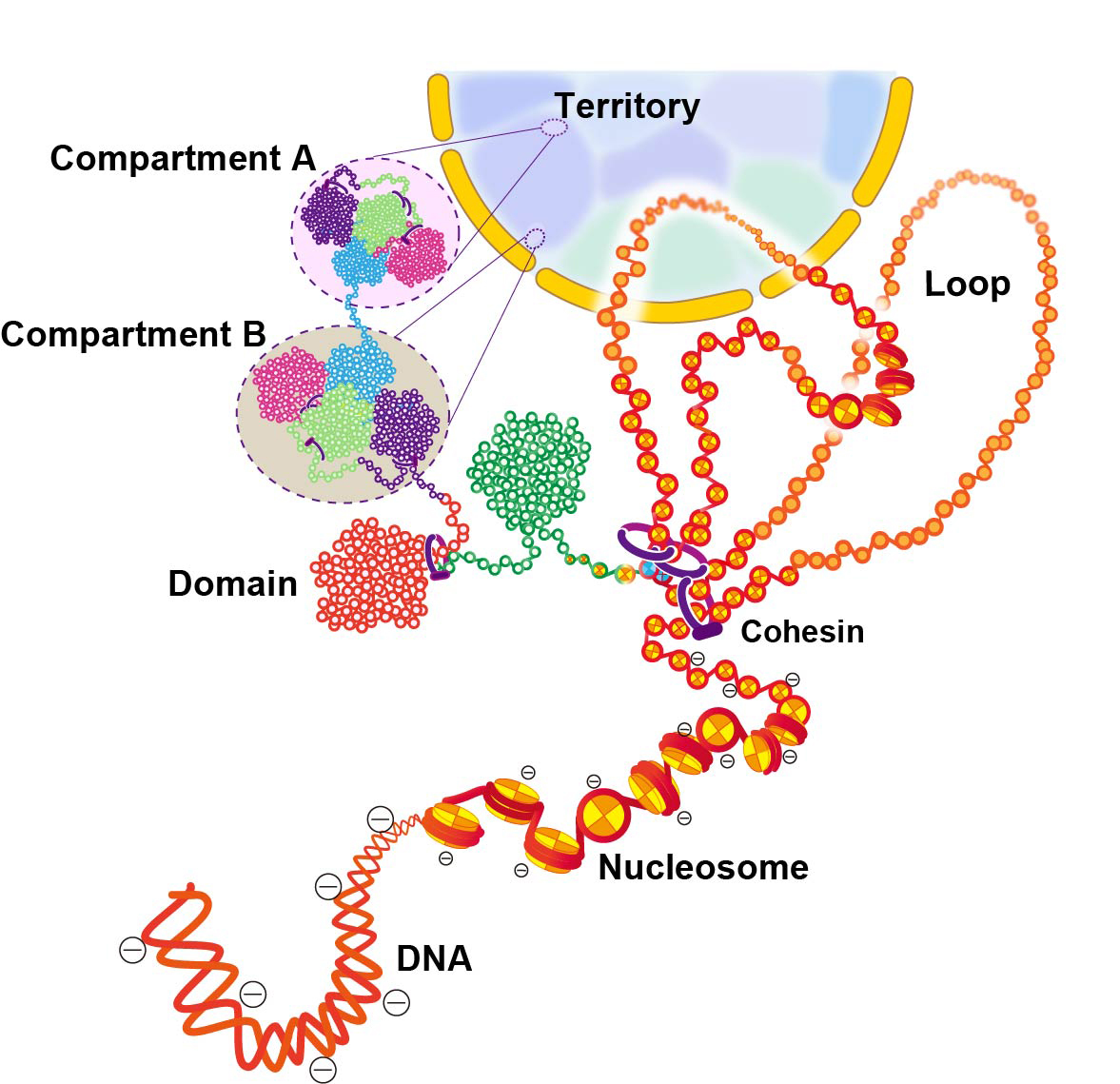Fluid-like chromatin
Fluid-like chromatin: Toward understanding the real chromatin organization present in the cell
Kazuhiro Maeshima, Sachiko Tamura, Jeffrey C. Hansen and Yuji Itoh
Current Opinion in Cell Biology (2020) 64, 77-89. DOI:10.1016/j.ceb.2020.02.016
Eukaryotic chromatin is a negatively charged polymer consisting of genomic DNA, histones, and various non-histone proteins. Because of its highly charged character, the structure of chromatin varies greatly depending on the surrounding environment (i.e. cations etc.): from an extended 10-nm fiber, to a folded 30-nm fiber, to chromatin condensates/liquid-droplets. Over the last ten years, newly developed technologies have drastically shifted our view on chromatin from a static regular structure to a more irregular and dynamic one, locally like a fluid. Since no single imaging (or genomics) method can tell us everything and beautiful images (or models) can fool our minds, comprehensive analyses based on many technical approaches are important to capture actual chromatin organization inside the cell. Here we critically discuss our current view on chromatin and methodology used to support the view.
This research was supported by JST CREST (JPMJCR15G2), JSPS Kakenhi (19K23735, 16H04746, 16H06279 (PAGS) and 19H05273), Takeda Science Foundation, National Science Foundation grant (1814012), NIG Postdoctoral Fellowship and JSPS Postdoctoral Fellowship (PD).

Figure: Scheme for hierarchical chromatin organization inside the cell nucleus.
DNA is wrapped around histone octamer to make a nucleosome. The 10-nm chromatin fiber can form a loop structure held by cohesin or other proteins. The chain of nucleosomes is compacted into chromatin domains, which interact over long distances to form chromatin compartments. A and B compartments in general represent transcriptionally active or open chromatin state (compartment A) and inactive or closed chromatin (compartment B), respectively. A single interphase chromosome consists of several compartments occupies that collectively form a chromosome territory. Note that this scheme is highly simplified and a more complex organization can be possible inside the cell.















